In the overwhelming majority of the country’s universities and colleges the monthly tuition fee is equivalent to the price of a cup of coffee. Indiscriminate subsidisation is drying up a high-potential revenue stream of institutions of higher education. Summiya Yasmeen reports
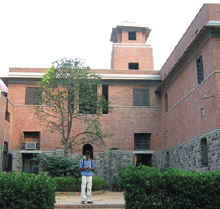 It’s one of the guilty secrets of an iniquitous social order fashioned by post-independence India’s elitist mindset middle class for the middle class showered with a plethora of government subsidies (water, electricity, cooking gas, food, fertilizer, pesticides, etc), which very few want to talk about. But like a growing baby elephant in a tiny apartment, it’s becoming impossible to ignore.
It’s one of the guilty secrets of an iniquitous social order fashioned by post-independence India’s elitist mindset middle class for the middle class showered with a plethora of government subsidies (water, electricity, cooking gas, food, fertilizer, pesticides, etc), which very few want to talk about. But like a growing baby elephant in a tiny apartment, it’s becoming impossible to ignore.
At the start of the new academic year this month an estimated 3 million eager and excited school leavers will stream into India’s 400 universities and 18,000 plus colleges to acquire vitally important higher and professional education which will prepare them for entry into leadership positions in Indian politics, industry, the civil service and professions. But unlike their counterparts the world over and in the developed industrial nations in particular, financing collegiate education is the least of their worries. In the overwhelming majority of the country’s arts, science and commerce colleges, the monthly tuition fee is equivalent to the price of a cup of coffee at a Coffee Day cafe.
It’s shocking but true. In contemporary India’s over-subsidised higher education system, tuition fees range between Rs.30-100 per month. Barring a few fully private universities and colleges which levy cost-related charges, tuition fees in publicly funded universities and aided undergraduate colleges have been frozen since the 1950s with students paying barely 5-6 percent of the actual cost of education provision (cf. 60 percent in the US and 27 percent in China).
For instance an undergrad student admitted into India’s top liberal arts college St. Stephen’s, Delhi is obliged to pay a tuition fee of a mere Rs.360 per year whereas a student in Amherst College, America’s No.1 liberal arts education college, pays Rs.14 lakh. Ditto tuition fees in Delhi University average Rs.180 per year, while in Harvard University it’s Rs.14.6 lakh. This indiscriminate universal subsidi-sation of students in government and aided higher education institutions by the Central and state governments costs the country’s taxpayers an estimated Rs.32,900 crore per year.
Worse, even the education of the small number of 6,000-7,000 students admitted (after they top gruelling common entrance tests) into the country’s premier Indian Institutes of Technology and Indian Institutes of Management is heavily subsidised, regardless of the fact that immediately after graduation they are snapped up by India Inc at annual remuneration packages averaging Rs.9-10 lakh — i.e double their yearly tuition-cum-residence fees.
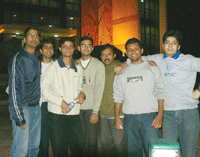 But growing public indignation about over-subsidisation of IIM and IIT elites has made some impact. On March 29, IIM-Ahmedabad doubled its tuition-cum-residence fee for the institute’s two-year postgrad MBA programme from Rs.5 lakh to Rs.11.5 lakh, while IIM-Bangalore raised it from Rs.5 lakh to Rs.8 lakh and IIM-Calcutta from Rs.4 lakh to Rs.7 lakh. The other three IIMs are expected to announce fee hikes of a similar order. Even the country’s seven IITs doubled their rock bottom annual tuition fees from Rs.25,000 to Rs.50,000 early this year. But even this revised tuition fee is nowhere near the Rs.200,000 per year the Central government invests in the education of every IIT student.
But growing public indignation about over-subsidisation of IIM and IIT elites has made some impact. On March 29, IIM-Ahmedabad doubled its tuition-cum-residence fee for the institute’s two-year postgrad MBA programme from Rs.5 lakh to Rs.11.5 lakh, while IIM-Bangalore raised it from Rs.5 lakh to Rs.8 lakh and IIM-Calcutta from Rs.4 lakh to Rs.7 lakh. The other three IIMs are expected to announce fee hikes of a similar order. Even the country’s seven IITs doubled their rock bottom annual tuition fees from Rs.25,000 to Rs.50,000 early this year. But even this revised tuition fee is nowhere near the Rs.200,000 per year the Central government invests in the education of every IIT student.
The commonly advanced — and widely accepted — argument for subsidising tertiary education is that it’s a prerequisite of ensuring equitable access into institutions of higher learning. Committee after committee set up by the Central government to examine fee reforms and government financing of higher education, has argued that higher education is the State’s responsibility and a public good. “Higher education determines its (India’s) economic and technological progress… Government funding must continue to be an essential and mandatory requirement for support to higher education. The government/State must continue to accept the major responsibility for funding…” recommended the report of the Justice Dr. K. Punayya Committee on UGC funding of institutions of higher education (1993).
A decade later the Central Advisory Board of Education (CABE) — revived by the Congress-led UPA government when it was voted to power in New Delhi in 2004 — in its report Financing Higher and Technical Education, reiterated the need for government subsidy and cautioned against upward fee revision. “Any reforms in student fees have to be related to the living conditions of the students, as substantial increase in fees will push away students belonging to the poorer socio-economic strata from higher education institutions. In view of this, it would be neither desirable nor feasible to aim at increasing the proportion of the fees significantly. It is important to note that higher education in India is somewhat democratised, with a good number of students from weaker economic backgrounds entering these institutions, because of public subsidisation (involving both direct and hidden subsidies)…” says the report.
The stubborn refusal of Central and state government education bureau-crats and academia to link students’ tuition fees with rising costs of higher education is in sharp contrast to countries in the West and Asia, including China. Most of them have been raising collegiate and university tuition fees consistently, while devising robust fee deferral and soft loan systems for needy students.
In the US, fees of public and private universities rose by 14.1 percent from 2002-03 to 2003-04. In the UK the means- tested grants system has been replaced by universal tuition fees with most domestic students charged the maximum permissible £3,000 (Rs.2.52 lakh) per year. In Japan, public universities were conferred greater autonomy in 2004 including the freedom to set their own tuition fees. Australia moved to regulated differential fees in 1997 and now allows universities to charge higher fees according to costs and demand.
In communist China, all higher education institutions charge tuition fees and approximately 27 percent of the total recurrent higher education expenditure is covered by students’ tuition fees. In Canada university tuition fees almost doubled in the 1990s, and have since been rising steadily with research indicating that higher tuition fees have improved university infrastructure, attracting higher enrollment.
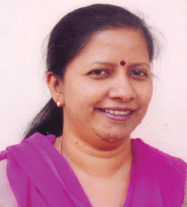 “In most countries higher education is regarded as a private good, for which students are required to pay market-determined prices. In post-independence India the demand on the higher education system was relatively low and hence comprised a handful of excellent institutions. It was necessary for government to widen participation by classifying it as a public good and subsidising tuition fees. But over the past half century the higher education system has expanded several fold and the resources of the Central and state governments have been far from adequate to fund this sector. Therefore the great majority of universities and colleges have little or no money for infrastructure upgradation and/or more importantly, to hire talented faculty. In the present circumstances to enable Indian universities to compete on a global scale, they must be allowed to raise resources through higher tuition fees — supported by student loans — at the same time introducing targeted subsidies for poor and meritorious students. This balance is crucial,” says Dr. B.K. Anitha, an alumna of the Institute of Social and Economic Change, Bangalore and currently a fellow of the National Institute of Advanced Studies, Bangalore and cotermi-nously organising secretary of Emerging Directions in Global Education (EDGE), an initiative working towards the internationalisation of higher education.
“In most countries higher education is regarded as a private good, for which students are required to pay market-determined prices. In post-independence India the demand on the higher education system was relatively low and hence comprised a handful of excellent institutions. It was necessary for government to widen participation by classifying it as a public good and subsidising tuition fees. But over the past half century the higher education system has expanded several fold and the resources of the Central and state governments have been far from adequate to fund this sector. Therefore the great majority of universities and colleges have little or no money for infrastructure upgradation and/or more importantly, to hire talented faculty. In the present circumstances to enable Indian universities to compete on a global scale, they must be allowed to raise resources through higher tuition fees — supported by student loans — at the same time introducing targeted subsidies for poor and meritorious students. This balance is crucial,” says Dr. B.K. Anitha, an alumna of the Institute of Social and Economic Change, Bangalore and currently a fellow of the National Institute of Advanced Studies, Bangalore and cotermi-nously organising secretary of Emerging Directions in Global Education (EDGE), an initiative working towards the internationalisation of higher education.
Particularly during the past two decades with government spending priorities redirected towards the country’s crumbling elementary education system, institutions of tertiary education with their paltry tuition fee incomes have suffered greatly. According to the CABE Committee (quoted earlier) government expenditure per student in higher education has declined steadily in the 1990s. “The decline has been very drastic during the 1990s. At 1993-94 prices, expenditure on higher education per student declined from Rs.7,676 in 1990-91 to Rs.5,500 in 2002-03 (budget estimates), a decline of nearly 28 percentage points in the index of a 12-year period. Decline in per student expenditure means decline in real resources available per student on average, seriously affecting the quality of higher education. There were steep cuts in budget allocations for libraries, laboratories, scholarships, faculty improvement programmes, and even for faculty salaries, along with others...,” says the report.
Inevitably, the massive funds crunch in higher education has adversely affected the quality of education dispensed. A recent (2005) study conducted by NASSCOM (National Association of Software and Service Companies) and the New York-based transnational management consultancy firm McKinsey & Co indicates that 75 percent of graduates of the country’s 1,346 engineering colleges are “unemployable”, and only 10-15 percent of India’s 18,000 arts, commerce and science college graduates are near industry-ready.
Moreover the quality gap between the education dispensed by Indian universities and those in the West and China has widened considerably. For instance no Indian university/college figured in the recent (2007) rankings of the world’s top 500 universities compiled by the Shanghai Jia Tong University. In terms of infrastructure facilities too, publicly funded Indian universities and aided colleges compare badly with their counterparts abroad. The great majority of them are characterised by crumbling buildings, poorly maintained libraries and antiquated laboratories.
Somewhat belatedly, voices for rationalisation of tuition fees of publicly funded universities and aided colleges to enable them to raise additional resources, are getting louder. The Planning Commission’s Eleventh Plan (2007-12) approach paper has called for a rise in tuition fees to cover at least 20 percent of institutional expenditure. Likewise the National Knowledge Commission, chaired by the Chicago-based NRI multi-millionaire Satyen (‘Sam’) Pitroda, in its report submitted to prime minister Manmohan Singh in November 2006, has also recommended that tuition fees should meet at least 20 percent of the total expenditure of universities (cf. less than 5-6 percent currently).
.gif) In particular Pitroda has spoken up against the indiscriminate subsidisation of higher education. “In most universities, fees have remained unchanged for decades... The low fees in public universities, without any means test, have meant unquantifiable benefits for unintended beneficiaries. The time has come to rethink, as we have no choice but to rationalise fees. It is for universities to decide the level of fees but, as a norm, fees should meet at least 20 percent of the total expenditure of universities... This rationalisation of fees should be subject to needy students being provided with fee waivers plus scholarships to meet their costs,” wrote Pitroda to the prime minister.
In particular Pitroda has spoken up against the indiscriminate subsidisation of higher education. “In most universities, fees have remained unchanged for decades... The low fees in public universities, without any means test, have meant unquantifiable benefits for unintended beneficiaries. The time has come to rethink, as we have no choice but to rationalise fees. It is for universities to decide the level of fees but, as a norm, fees should meet at least 20 percent of the total expenditure of universities... This rationalisation of fees should be subject to needy students being provided with fee waivers plus scholarships to meet their costs,” wrote Pitroda to the prime minister.
Indeed the case for eliminating blanket subsidisation of higher education and replacing the existing system with a targeted subsidies regime is overwhelming. Informal research indicates that the great majority of contemporary India’s 12 million students in tertiary education (a mere 9 percent of those in the age group 17-24) are middle class and from the top 10 percent of households in terms of annual income level. Nor is it a secret that students from high-end private schools, levying monthly tuition fees ranging between Rs.1,000-4,000, grab most of the merit seats in top public universities such as Delhi U, JNU and aided colleges such as St. Stephen’s, Delhi and Presidency College, Kolkata, where tuition fees have remained static at Rs.20-30 per month. In effect for the past half century, the higher education of India’s prosperous middle and upper middle class students has been subsidised by the poor majority — an iniquity obfuscated by politicians and mainstream media.
 The case for charging market-determined tuition fees while simultaneously providing subsidies by way of soft loans and scholarships to students from low-income households is also advanced by Dr. D.K. Srivastava, director of the Madras School of Economics, Chennai. “There is a strong case for charging the majority of students full tuition fees reflecting the actual cost of education provision, with special subsidies for genuinely poor students. Currently there is no linkage between fees charged and capacity of students to pay. By mandating rock bottom fees for all students, institutions compromise on quality of education dispensed. Instead of indiscriminately subsidising all students in higher education, the Central and state governments should subsidise loans particularly for degrees where employability is not immediate,” says Srivastava, an alumnus of Allahabad and St. Andrews (UK) universities.
The case for charging market-determined tuition fees while simultaneously providing subsidies by way of soft loans and scholarships to students from low-income households is also advanced by Dr. D.K. Srivastava, director of the Madras School of Economics, Chennai. “There is a strong case for charging the majority of students full tuition fees reflecting the actual cost of education provision, with special subsidies for genuinely poor students. Currently there is no linkage between fees charged and capacity of students to pay. By mandating rock bottom fees for all students, institutions compromise on quality of education dispensed. Instead of indiscriminately subsidising all students in higher education, the Central and state governments should subsidise loans particularly for degrees where employability is not immediate,” says Srivastava, an alumnus of Allahabad and St. Andrews (UK) universities.
It is an indicator of pervasive inertia and work aversion in the Union HRD ministry and state education departments that instead of attempting to devise ways and means to identify deserving meritorious students in higher education who need financial aid, lazy bureaucrats have taken the soft option of universal subsidisation of higher education thereby effectively blocking a high-potential revenue stream of publicly funded colleges and universities. The standard excuse is that means testing will open a pandora’s box of corruption which — as is common knowledge — the Indian soft state is powerless to punish.
Nevertheless a growing number of knowledgeable intellectuals believe that new ICT (information communication technologies) have made means testing based on income, assets and wealth data much easier. “Means testing by universities and colleges requires extensive analysis of documentation and verification of citizen profiles. New information technology is making this feasible. Therefore traditional arguments against means testing have become untenable,” says Ashima Goyal, professor of economics at the Indira Gandhi Institute of Development and Research, Mumbai.
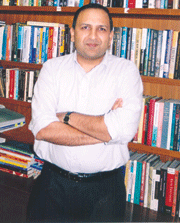 Pratap Bhanu Mehta, president of the Centre for Policy Research, Delhi, believes that computer-driven forecasting models can go beyond means testing. “Means testing is too simplistic an idea. It is possible to levy collegiate and varsity fees according to possibilities of future earnings based on study programmes. This in some respects, is a fairer idea, and in the case of professional courses, gives a good sense of the market value of a degree or diploma,” says Mehta, an alumnus of Oxford and Princeton universities and former member convenor of the National Knowledge Commission.
Pratap Bhanu Mehta, president of the Centre for Policy Research, Delhi, believes that computer-driven forecasting models can go beyond means testing. “Means testing is too simplistic an idea. It is possible to levy collegiate and varsity fees according to possibilities of future earnings based on study programmes. This in some respects, is a fairer idea, and in the case of professional courses, gives a good sense of the market value of a degree or diploma,” says Mehta, an alumnus of Oxford and Princeton universities and former member convenor of the National Knowledge Commission.
Moreover contrary to popular belief, a regime of targeted subsidies in higher education is already in existence and is of considerable vintage. In the country’s 2,000 plus private engineering colleges, ‘merit students’ (those who top state government common entrance tests) pay lower tuition fees than ‘management quota’ students. For instance in Tamil Nadu, all 220 private engineering colleges have accepted a 65:35 admissions arrangement under which 65 percent of seats are allocated to students through the state government’s single window system of counselling and the remaining are filled by college managements.
In 2003 the Justice Balasubramaniam Committee calculated Rs.32,500 per year as a reasonable tuition fee for merit students and Rs.62,500 per year for management quota students. Under this arrangement, for reasons of administrative convenience it is presumed that merit students are from low income households — a debatable presumption. Indeed with easier access to ubiquitous coaching schools and tutorial institutions, students from relatively affluent middle class households tend to dominate merit lists and grab higher subsidies.
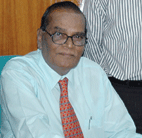 Moreover given that merit and management quota fees are determined by state government appointed fee committees headed by retired high court justices steeped in the socialist tradition and opposed to the “commercialisation of education”, invariably the tuition fees payable are pitched too low to permit provision of high quality engineering/medical education. “The existing fee structure is inadequate to finance good quality infrastructure and high faculty salaries. Moreover the tuition fees payable have not been revised for the past five years. Since the government prohibits us from determining our own tuition fee structures, we are forced to adjust our finances and expenditure accordingly,” says Dr. S. Seetharaman, principal of Sai Ram Engineering College, Chennai.
Moreover given that merit and management quota fees are determined by state government appointed fee committees headed by retired high court justices steeped in the socialist tradition and opposed to the “commercialisation of education”, invariably the tuition fees payable are pitched too low to permit provision of high quality engineering/medical education. “The existing fee structure is inadequate to finance good quality infrastructure and high faculty salaries. Moreover the tuition fees payable have not been revised for the past five years. Since the government prohibits us from determining our own tuition fee structures, we are forced to adjust our finances and expenditure accordingly,” says Dr. S. Seetharaman, principal of Sai Ram Engineering College, Chennai.
Although since the dawn of the new millennium, learned justices of the country’s Supreme Court have seen the light and acknowledged the absurdity of heavy-handed government control of private, unaided institutions of professional education, the bias in favour of government regulation of higher education persists. In two landmark judgements, T.M.A Pai Foundation & Ors vs. Union of India (2002 8 SCC 481) and P.A. Inamdar vs. State of Maharashtra (Appeal (civil) 5041 of 2005), full-strength benches of the Supreme Court permitted unaided professional colleges to design their own admission systems and levy tuition fees which would permit them to earn “reasonable surpluses”.
But following a somewhat confusing ‘clarification’ judgement of a five-judge bench of the apex court in Islamic Academy vs. State of Maharashtra & Ors (2003 6 SCC 697), the full-bench judgements of the court in the T.M.A. Pai and Inamdar cases are being sabotaged by state level educrats, reluctant to relinquish control. Therefore currently government appointed committees continue to supervise admission procedures and tuition fees leviable — an arrangement which private college managements have been bulldozed into accepting.
Undoubtedly, ham-fisted government and political interference in higher education is the single most important factor responsible for the pitiable condition of Indian colleges and universities churning out 3 million under-prepared graduates annually. Theoretically, publicly funded universities are autonomous institutions with the freedom to calibrate tuition fees on the basis of costs of education provision. In practice, tightly controlled colleges and universities have not exercised this freedom because of the rhetoric and populism of the political process. Over the past three decades, politicians cutting across all parties and politicised student unions have fiercely resisted even marginal hikes of ridiculously low tuition fees. The most modest hikes in fee structures tend to spark violent student protests and rioting on campuses countrywide.
 A case in point is Lucknow University (estb.1921) where widespread student protests forced the university management to withdraw a modest annual fee hike of Rs.300 in 2005 (LU students pay Rs.1,162 per year towards tuition). “The only possible rationale behind absurdly low fees paid is the political necessity to protect vote banks. Though they exist as autonomous entities, actually universities are powerless to do anything as they are wholly dependent on government grants to pay faculty salaries. After a decade, in 2005 when tuition fees were hiked by Rs.300, there were violent student protests, and the increase had to be withdrawn,” says Dr. Saroj Anand, head of the department of education at Lucknow University, which reported a deficit of Rs.10 crore last year and where 100 faculty positions are vacant.
A case in point is Lucknow University (estb.1921) where widespread student protests forced the university management to withdraw a modest annual fee hike of Rs.300 in 2005 (LU students pay Rs.1,162 per year towards tuition). “The only possible rationale behind absurdly low fees paid is the political necessity to protect vote banks. Though they exist as autonomous entities, actually universities are powerless to do anything as they are wholly dependent on government grants to pay faculty salaries. After a decade, in 2005 when tuition fees were hiked by Rs.300, there were violent student protests, and the increase had to be withdrawn,” says Dr. Saroj Anand, head of the department of education at Lucknow University, which reported a deficit of Rs.10 crore last year and where 100 faculty positions are vacant.
Likewise in the country’s showpiece Delhi University, where tuition fees have remained frozen at Rs.180 per year for the past 60 years, any increase is certain to trigger student protests. Comments Amrita Bahari, president of the Delhi University Students Union (DUSU): “I don’t think there is any need for higher tuition fees. Any move to increase fees will be strongly resisted by us. DU is one of the world’s best universities because it keeps its fees low. It’s the government’s responsibility to adequately fund the university and it’s unjust to ask students to pay. We are a socialist state and the government must fund higher education if we want equality for all.”
Meanwhile faced with a pervasive funds crunch and prohibited from charging market-related tuition fees, universities and aided undergraduate colleges have resorted to raising resources by levying charges under various development and non-development heads. Thus in addition to tuition fee, students pay separate examination, registration and admission, library and laboratory and sports fees. But finance raised through other fees is modest. For instance in St. Stephen’s College, Delhi, students pay a mere Rs.360 as other fees in addition to Rs.30 as tuition fee per month. Moreover a large number of universities and undergraduate colleges have launched ‘self-financing’ vocational courses — journalism, nutrition and dietetics, travel and tourism, human genetics, biotechnology, etc — to generate additional resources. For self-financing courses, universities and colleges are free to charge market-driven tuition fees, but the revenue thus collected is insufficient to cross-subsidise mainstream study programmes.
 “Though we raise additional resources through other fees and self-financing courses, it’s insufficient to meet the full cost of education provision and hire talented faculty. I believe the state must get out of higher education and give at least colleges with established track records, full autonomy. This 126-year-old college was granted autonomous status by UGC two years ago, but our autonomy is restricted to curriculum development and conduct of examinations. As an aided institution we are not permitted to determine tuition fee structures or grant degrees,” says Fr. Ambrose Pinto, the principal of St. Joseph’s Arts and Science College, Bangalore (estb.1882) which has an aggregate enrollment of 2,000 instructed by 200 faculty whose salaries are paid by the state government.
“Though we raise additional resources through other fees and self-financing courses, it’s insufficient to meet the full cost of education provision and hire talented faculty. I believe the state must get out of higher education and give at least colleges with established track records, full autonomy. This 126-year-old college was granted autonomous status by UGC two years ago, but our autonomy is restricted to curriculum development and conduct of examinations. As an aided institution we are not permitted to determine tuition fee structures or grant degrees,” says Fr. Ambrose Pinto, the principal of St. Joseph’s Arts and Science College, Bangalore (estb.1882) which has an aggregate enrollment of 2,000 instructed by 200 faculty whose salaries are paid by the state government.
Fr. Pinto believes that to raise resources to fund infrastructure upgradation and expand capacity, college managements should tap alumni donations and industry support. “Though state subsidisation of higher education must continue for reasons of equity and access, universities and colleges need to start building endowment corpuses with the help of alumni and industry grants. Indian industry is the biggest beneficiary of qualified graduates and must improve its philanthropic contributions by entering into partnerships with higher education institutions,” adds Pinto.
Yet so topsy-turvy are the rules and regulations of India’s higher education system, that while the world over universities and colleges are encouraged to raise resources through alumni donations and industry grants, in India they are punished. Under a set of complex and bizarre rules, the apex-level University Grants Commission and state governments penalise publicly funded universities and aided colleges which raise resources by way of other fees, alumni donations and industry contributions, through matching deductions from grants-in-aid.
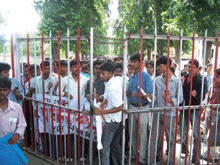 Ironically — and perhaps inevitably — post-independence India’s heavy subsidisation of tertiary education hasn’t improved student access to higher education. Currently only 9 percent of the population in the relevant age group (17-24) enters higher education in India (cf. 83 percent in the US, 60 percent in UK, and 20 percent in China). According to the National Knowledge Commission, 70 percent of the 12 million students in tertiary education study in universities and undergraduate colleges, with the rest enrolled in professional colleges. While there has been de facto privatisation in professional higher education, privatisation in university education is almost negligible. Governments in New Delhi and state capitals have consistently opposed liberalisation and deregulation of higher education to expand capacity. A Bill to facilitate promotion of private universities has been pending in Parliament since 1995.
Ironically — and perhaps inevitably — post-independence India’s heavy subsidisation of tertiary education hasn’t improved student access to higher education. Currently only 9 percent of the population in the relevant age group (17-24) enters higher education in India (cf. 83 percent in the US, 60 percent in UK, and 20 percent in China). According to the National Knowledge Commission, 70 percent of the 12 million students in tertiary education study in universities and undergraduate colleges, with the rest enrolled in professional colleges. While there has been de facto privatisation in professional higher education, privatisation in university education is almost negligible. Governments in New Delhi and state capitals have consistently opposed liberalisation and deregulation of higher education to expand capacity. A Bill to facilitate promotion of private universities has been pending in Parliament since 1995.
Moreover because tertiary education in India is heavily dependent upon funding from deficit-running over-extended Central and state governments, India spends a mere 0.7 percent of GDP on higher education (cf. 2.9 in US and 0.5 in China). Little wonder the Knowledge Commission has recommended that spending must be doubled to 1.5 percent of GDP “out of a total of at least 6 percent of GDP for education”, to add another 1,500 colleges/universities (to India’s current pool of 400 universities and 18,000 colleges) and improve the gross tertiary enrollment ratio to 15 percent.
Likewise the Planning Commission in its Eleventh Plan (2007-12) document has recommended a massive Rs.2,36,997 crore allocation for higher education, i.e an additional Rs.47,399 crore per year. This additional provision is impossible without heavy private (and foreign) investment in tertiary education. Therefore liberalisation and deregulation of higher education is the prerequisite of meaningful private investment in the country’s crumbling higher education system.
As the rapidly deteriorating quality of India’s higher education institutions testifies, over 60 years of indiscriminate universal subsidisation hasn’t worked. With Indian industry (and government) suffering an unprecedented shortage of skilled workers and professionals, the case for the unshackling of Indian academia is overwhelming if the 8 percent plus performance record of the Indian economy is to be maintained.
With Autar Nehru (Delhi); Vidya Pandit (Lucknow) & Hemalatha Raghupathi (Chennai)